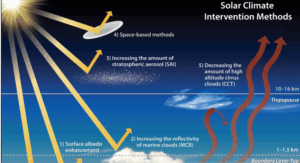
Why in News?
The World Bank revised the global poverty line from $2.15/day (PPP 2017) to $3/day (PPP 2021). This revision is based on updated price data and new survey methods. 
What Is the Global Poverty Line
- A poverty line defines the minimum daily spending required to meet basic needs such as food, clothing, and shelter.
- The global poverty line uses Purchasing Power Parity (PPP) so that different countries can be compared without currency value affecting the result.
How Is the Poverty Rate Determined
- Poverty rate is the percentage of people who spend less than a fixed amount per day (such as $2.15/day).
- The World Bank uses household consumption data, adjusted for PPP and inflation, to calculate both national and global poverty rates.
Recent Changes in The Global Poverty Line
| Aspect | Old Poverty Line | New Poverty Line |
|---|---|---|
| Benchmark | $2.15/day (2017 PPP) | $3/day (2021 PPP) |
| Basis | Limited surveys and older PPP | Improved CES 2022–23, updated price levels |
| Result | 9% global poverty in 2022 | 10.5% global poverty in 2022 |
Key Features of the New Revision
- The new estimate reflects more detailed consumption data and a more accurate cost of living, especially in countries like India.
- The extreme poverty line is now calculated using the median poverty line of low-income countries.
Implications for India
- Sharp Drop in Extreme Poverty: Under the older $2.15 line, 2.4% of Indians were poor in 2022. The new $3 line raises this to 5.3%, which still shows a strong improvement from 16.2% in 2011–12.
- Data Shift: The increase is based on the 2022–23 Consumption Expenditure Survey (CES), the first official survey in 11 years, which records higher household consumption and shows improved living standards.
- Moderate Poverty Still Significant: At the $4.20/day line used for lower-middle-income countries, 23.9% of Indians were poor in 2022, which confirms that moderate poverty continues to be a concern.
- Global Comparison Better Reflects Indian Progress: India’s progress is clearer with the use of new PPP-adjusted benchmarks and stronger domestic data integration into global metrics.
- Caution in Comparison: Data from older surveys like the 2011–12 CES should not be compared directly because the methods and inflation adjustments are different.
About Purchasing Power Parity?
Purchasing Power Parity (PPP) is an economic theory that compares the currencies of different countries through a “basket of goods” approach. It helps to determine the relative value of currencies based on the cost of the same goods or services in different countries.






